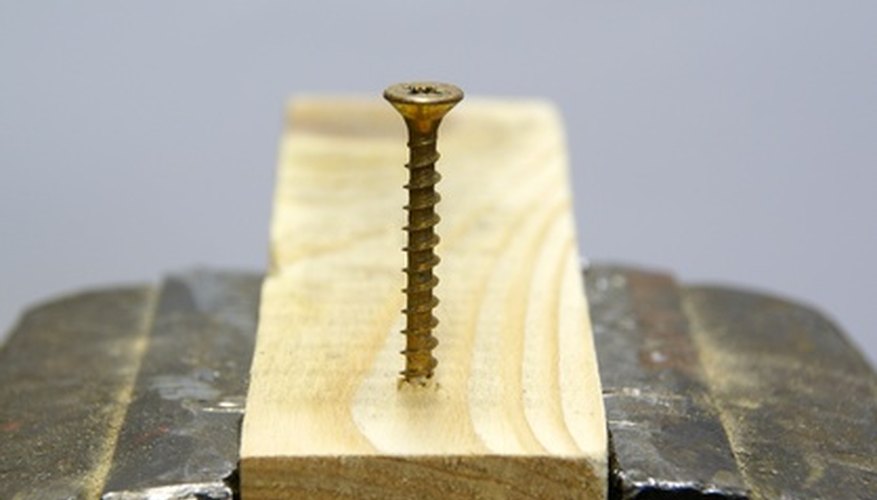Using screws is an effective way to join wood as long as the wood doesn't split. If the wood is dry, the boards are narrow or you screw too close to the end, however, the displacement of the screw can force fibres apart, creating a less-than-perfect joint and possibly ruining the wood. This is an especially important issue in cabinetmaking and interior woodwork when you are working with kiln-dried boards that are fragile. You can create effective screw joints without splitting by taking a few precautions.
- Using screws is an effective way to join wood as long as the wood doesn't split.
- If the wood is dry, the boards are narrow or you screw too close to the end, however, the displacement of the screw can force fibres apart, creating a less-than-perfect joint and possibly ruining the wood.
Mark the position of the screw and drill a pilot hole with a drill bit slightly smaller in diameter than the shank of the screw. Drill the hole completely through the wood on the top of the joint and partially through the wood on the bottom, leaving enough material at the end of the hole for the screw to bite into.
Avoid screwing within 1/2 inch of the end of a board. Even if you drill a pilot hole, the head of the screw may force the wood apart when you drive it into the surface.
Sink the head of the screw no more than 1/16 inch past the surface of the wood. If you want to sink the head deeper, countersink by drilling a hole to the depth you want to sink the head with a drill bit slightly larger than the head of the screw.
Roll a screw in paraffin wax until it is completely covered before driving it. The wax will lubricate the screw as it goes through the wood and prevent splitting.
- Sink the head of the screw no more than 1/16 inch past the surface of the wood.
- The wax will lubricate the screw as it goes through the wood and prevent splitting.
Spread carpenters' glue between the boards you are screwing if the top board will experience lateral or outward stress. Examples of such a situation would be braces for cabinets or shelving. When the boards are held together with glue, there is less chance of their being pulled apart and splitting.
Use bolts instead of screws to attach hinges to thin pieces of wood. Drill a hole the size of the bolt shank, insert the bolt, and screw on a nut from the other side. The bolts will keep the hinges from pulling away from the wood and splitting it when the door that is attached to them is opened fully.
TIP
If wood splits while you are driving a screw, you can often remove the screw and repair the split with glue and clamps. After the glue dries, drill a pilot hole before driving another screw.
WARNING
Splitting wood weakens structural integrity. If the joint will experience stress, repair the split or replace the wood rather than leaving the split as it is.
